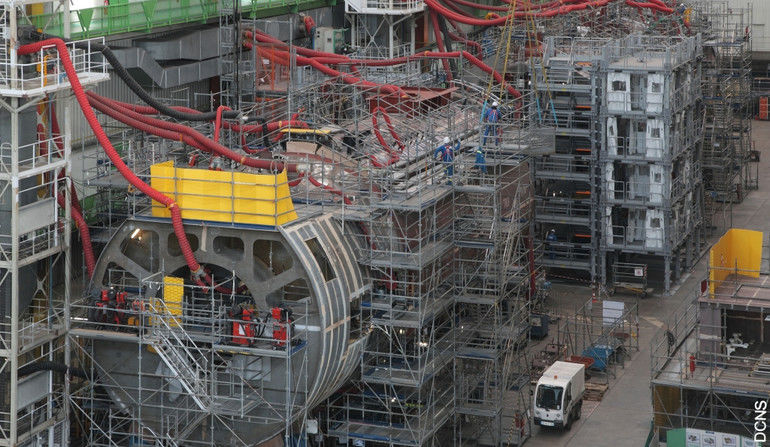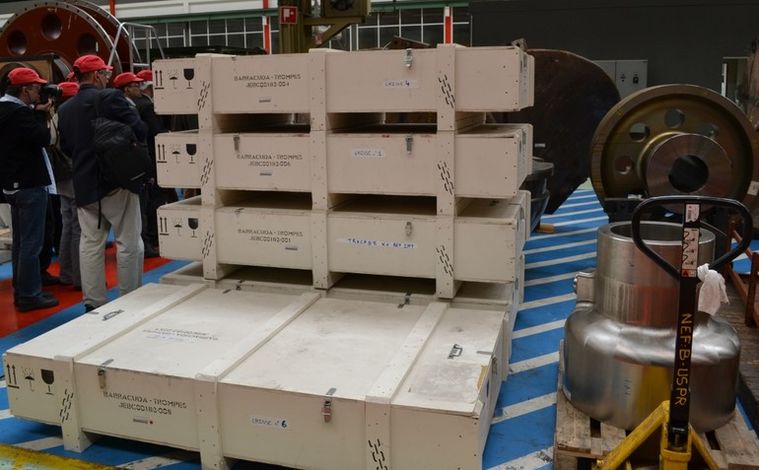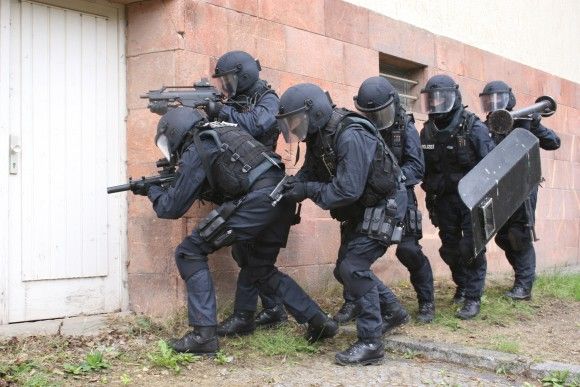First of the French Barracuda Submarines is Ready for Launch
The hull, of the first French Barracuda-class submarine, has been moved to the ramp which is going to be used to launch the vessel next year.
French DCNS company revealed information, according to which “Suffren”, which is the first of the nuclear Barracuda class attack submarines, has its hull ready, and that relevant equipment is being installed now. This information is especially important in the light of the fact, that releases concerning the progress of construction works pertaining to these important vessels have not been published very frequently so far. The situation has undergone a change once the Australian government selected Barracuda to become the future submarine for its Navy.
French and Australian vessels will be different solely within the scope of the applied propulsion system. The Australian submarines will not utilize a nuclear reactor, conventional diesel-electric system is expected to be used instead, with optional application of a new type of fuel cells, acting as the basis for the air-independent propulsion system.
Due to the procurement contract concluded with Australia, the work progress regarding the first, and subsequent Barracuda vessels, carried out at the Chherbourg shipbuilding facility, is closely observed and reported. So far, the works are realized in line with the assumed plan. Launch of the first sub - “Suffren” - has been planned to happen at the beginning of 2017. In mid 2017, sea trials are expected to begin, making it possible to hand off the vessel to the French Navy in 2018.

What about the next Barracudas?
Subsequent Barracuda-class vessels will be handed off in two-years intervals, in a progressive manner, until 2029. The last of a group of six nuclear attack Rubis-class submarines is going to be decommissioned by then. These vessels have also been introduced into service in the French Navy in similar intervals, across the period between 1983 and 1993. Two more Barracuda-class vessels are being assembled now. The second sub, under the name of “Duguay-Tourin”, will be introduced into service three years later, following the “Suffren”. So far, the DCNS company finalized the process in which the hull was being constructed. Now, equipment of the hull is being installed.

The works also have begun in case of the third vessel, known under its future name: “La Tourville”. This sub is expected to be handed off two years after “Duguay-Trouin”. All 21 hull segments are ready, they are, at the moment, being interconnected and equipped. Works that are especially important are being carried out within the section of the propulsion system, which is expected to be delivered to the DCNS Nantes-Indret facility, in order to install the nuclear reactor during the final stage of the assembly process.
“De Grasse”, which is the fourth vessel of this class, is still at the planning stage. However, sheet metal which is going to be used to create the hull of that vessel in June has already been received by the DCNS facility in Cherbourg. It is estimated that “De Grasse” would be handed off to the Navy two years after the “La Tourville”.

What is being built by the French now?
Selection of a French vessel made by the Australian was not a surprise. As it is being stressed by the experts, representatives of the Royal Australian Navy had a chance to get acquainted with every solution applied onboard the first French Barracuda-class submarine. Most probably, RAN also had an opportunity to compare the capabilities of the new vessel with the Rubis-class submarines, the Australians are using now.
The French, when they gave the Australians a chance to compare the two submarines, have proven that significant progress has been made, both when it comes to the combat capabilities, as well as within the scope of silencing the vessel, and reducing its acoustic signature. Here we are clearly witnessing the influence of the operational experience gained by the French Navy. This experience was translated, by the DCNS company, into new solutions, applied in case of the new generation of submarines.

The changes have been visible as early as during the construction works of the new nuclear submarines armed with the ballistic missiles – Le Triomphant class vessels. The solutions implemented in their case were further refined, and applied in case of the Barracudas.
Propulsion system is also being continuously refined. Barracuda vessels use a K15 50 MW reactor which is a direct derivative of the propulsion solution used in case of the strategic “Le Triomphant” class vessel, and in case of the “Charles de Gaulle” aircraft carrier. Thanks to the new developments, the top speed achievable by the new submarines when submerged, is to be close to 25 knots.
The experience gained during the long presence at sea, caused the Barracudas to be larger than the Rubis. The new vessels will be 99.5 meters long (73.6 meters for Rubis), with 4700 tonnes of displacement (2670 in case of Rubis). It is also expected that two sixty-person crews are going to be introduced. And the crews are going to be mixed, when it comes to the gender of the sailors - they are expected to include women as well.
Combat Equipment of the New Submarines
The DCNS's success in the Australian tender is a result of the fact that the French have been able to offer a complete equipment package, equivalent to the one applied in case of their latest attack submarines. This also concerns the armament. Barracudas are going to be fitted with four 533 mm torpedo launchers. A special, automated ordnance loading system will be able to deliver 20 torpedoes or missiles to the launchers. Depending on the task carried out by the submarine, the available armament includes MdCN (missiles de croisière navale) cruise missiles, Exocet SM93 anti-ship missiles, F21 heavy torpedoes, A3SM anti aircraft missiles (based on the Mica system) or even mines.

The hull will additionally be fitted with Canto-S decoy dispensers, constituting a part of the Nemesis countermeasures system, which is a derivative of the DCNS Contralto torpedo defence system.
On the basis of the combat experience, the French engineers also assume that Barracuda may be used to support special operations. In order to make this possible, space for ten additional persons has been created inside the hull. External equipment module, to be used by the commandos, may be mounted outside. This location may also be used to transport UUV systems.
The submarine will also use the latest French hydroacoustic suite including the main bow sonar, side antennas sonar with synthetic aperture, linear towed sonar and mine- and obstacle-detection sonar. Communication with the surface is provided by the SAGEM company suite, and the applied devices include Attack Optronic Mast AOM Series 30 and Search Optronic Mast SOP Series 30.
The armament, as well as the sensors, will be controlled with the use of the SYCOBS command system which is a new version of the solution which has been used operationally onboard the Le Triomphant submarines, which act as ballistic missile carriers. And this constitutes a guarantee of reliability and effectiveness.






